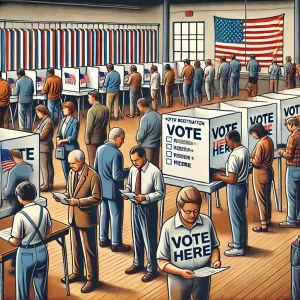
Find Your Polling Place: A Comprehensive Guide
As Election Day approaches, one of the most crucial pieces of information you need is the location of your polling place. This guide will help you understand how to easily find where you need to go to cast your vote and ensure your voice is heard.
Why Finding Your Polling Place is Important
Knowing your polling place is essential because:
- Ensures Timely Voting: You don’t waste time on Election Day looking for where to vote.
- Prevents Disenfranchisement: Voting at the wrong location can lead to receiving a provisional ballot, which might not be counted.
- Encourages Participation: Awareness of your polling location increases the likelihood of voting.
How to Find Your Polling Place
1. Use Official Government Resources
One of the most reliable ways to find your polling place is through official government websites:
- Visit the Vote.org Polling Place Locator.
- Check your state or local election office website for a polling place lookup tool.
2. Utilize Voting Apps and Websites
Several apps and websites can help you locate your polling place:
- Google’s Election Site: Free and easy to use, simply search “polling place” on Google.
- Pew Charitable Trusts’ Voting Information Project: Provides a variety of resources for voters.
- Rock the Vote: Excellent resource for young voters.
3. Refer to Your Voter Registration Card
Your voter registration card often includes your polling location. If you’ve misplaced it, you can typically obtain this information by contacting your local election office.
4. Contact Your Local Election Office
If you’re having trouble finding your polling place online, contact your local election office via phone or email. They can provide the necessary information.
5. Social Media and Community Resources
Leverage social media platforms and community groups for updates and reminders about polling locations. Organizations like the League of Women Voters frequently share pertinent information.
What to Do Once You Find Your Polling Place
1. Check Hours of Operation
Ensure you know when the polls open and close. Polling times can vary by location and date.
2. Prepare Required Identification
Different states have various identification requirements. Make sure you bring the correct form of ID to prevent any issues when you arrive.
3. Plan Your Visit
Consider the best time to vote. Avoid peak times if possible to reduce wait times. Early morning or mid-afternoon are often less busy.
4. Review Your Ballot
Familiarize yourself with the candidates and measures on your ballot. Being informed can speed up the process and ensure you make knowledgeable choices.
Frequently Asked Questions
What If I Go to the Wrong Polling Place?
If you vote at the wrong location, you may be given a provisional ballot. This ballot might not be counted if it’s determined that you’re not eligible to vote at that location. Always verify your polling place before heading out.
Can I Vote at Any Polling Place?
In most states, you must vote at your assigned polling place. However, some states allow you to vote at any polling location within your jurisdiction. Check your local regulations to be sure.
What Should I Bring to the Polls?
Always bring:
- Valid ID (check the specific requirements for your state)
- Voter Registration Card (if you have one)
- Notes or Sample Ballot to help you vote efficiently
Conclusion
Finding your polling place is a straightforward yet essential step in the voting process. By using the resources and tips outlined in this guide, you can ensure you’re prepared to cast your vote confidently and efficiently. Always verify your polling location ahead of time to avoid any last-minute issues, and encourage your friends and family to do the same.
Remember, every vote counts, and knowing where to go is the first step in making your voice heard.










